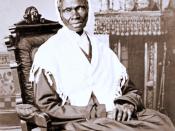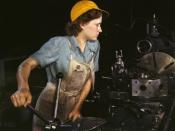The 1970s brought many changes to North American society. The largest, most significant change was in the industrial movement, which demonstrated a prominent transformation to the evolution of women in the workforce. Due to this massive economic conflict, many men became unemployed and women stepped up to employment to help out the family. The films "Norma Rae" and "Alice Doesn't Live Here Anymore" are two examples of these women, and the stories behind these types of women throughout the 1970s workforce. Norma Rae presented to us the story of Norma, who has assumed the male role, showing her equality to men and standing her ground when threatened. Alice Doesn't Live Here Anymore is almost entirely a contradiction, presenting to us the story of Alice, a woman that is left with nothing after her husband's death, and struggles to become employable without a man. However, all differences aside, each movie shows the audience that both women are after the exact same thing: self-achieved prosperity and proof that a woman can make it without substantial aid from a man.
In Norma Rae, we are given the image of a woman that was fed up with the lack of a union, and had begun a union campaign to bring justice to her and the workers of cotton mills in the southern US. She struggles to overcome the stereotype of women as she demands from her employers and the government that a union be set in place. She is an exceptionally strong woman, holding her own, and with little to no assistance from her husband. This image of Norma Rae was presented to the audience as pro-feminist, proving that a woman can single-handedly (apart from a male mentor) speak up for the working class and present a conflict that...


